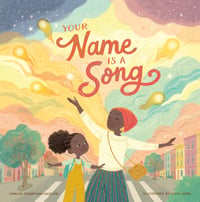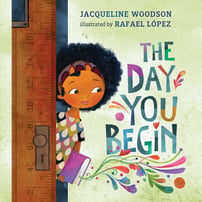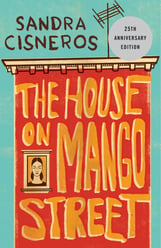All children should see themselves in texts. That’s my assertion – and that of countless researchers and practitioners who have seen the invaluable implications with children firsthand.
I have so many stories from classrooms spanning grade levels: the way a child’s eyes light up when she sees someone who looks like her in a picture book, the reluctant reader who suddenly cannot put his book down because he’s so engaged, the collective excitement to discuss with peers and make connections to their own and others’ lives.
Inclusive Texts
Decades ago, Rudine Sims Bishop (1990) wrote about the value of using books as mirrors and windows with children – mirrors for students to see themselves and windows to look in and see the lives of others. Research has consistently confirmed the value of using high-quality authentic texts as mirrors and windows.
Relevant and authentic texts can tap into background knowledge, spark engagement, enhance comprehension, deepen understandings, encourage oral language and writing, and strengthen connections with families.
I use the term inclusive texts to refer to books that authentically capture and portray the identities and experiences of children attending today’s schools (Heineke & Papola-Ellis, 2022). All students are unique and diverse, bringing an array of rich backgrounds and storied experiences from their homes and communities.
To tap into the benefits of children seeing themselves in texts, we need more books in classroom and school libraries that represent today’s students. But having books on the library shelf only begins to show students that their stories matter. The next step is to integrate inclusive texts designing curriculum and instruction.
While gearing up for the school year, teachers can consider how inclusive texts might enhance their work with students. In the initial weeks of the school year, inclusive texts can support teachers in building rapport, relationships, and community with children so that learners feel safe, comfortable, and valued in classrooms.
These activities use texts as seed ideas to encourage students to share their identities, experiences, and stories, which allow teachers and learners to get to know one another to start the school year. This blog details three examples of building a strong classroom community with inclusive texts in elementary and secondary classrooms.
Elementary Examples
Books about names provide an entry point to value identity and build community, such as the picture book Your Name is a Song (Thompkins-Bigelow, 2020).  The rhythmic prose centers on the conversation between a girl and her mother following the first day of school, when her teacher and peers could not pronounce her name. Using her mother’s wisdom, she returns to school to sing her name to demonstrate its beauty and model its pronunciation.
The rhythmic prose centers on the conversation between a girl and her mother following the first day of school, when her teacher and peers could not pronounce her name. Using her mother’s wisdom, she returns to school to sing her name to demonstrate its beauty and model its pronunciation.
Teachers can read this text aloud and discuss the importance of names, embracing the diversity of names and emphasizing the need to accurately pronounce names. Students can then use music, art, action, or another form of expression to convey their names to the class, with students using the model to practice, respond, and remember the names of their new friends and community members.
In addition to names, books that focus on children’s experiences can serve to build community. The Day You Begin (Woodson, 2018) is a beautiful picture book that centers on the premise that all children feel different – the girl who took care of her little sister over summer break rather than traveling, the boy who immigrated from Venezuela and speaks Spanish instead of English, the girl who brings rice and kimchi to lunch instead of a sandwich. 
On the first day of school, these differences can seem overwhelming, until children share stories and make connections with one another. Teachers can read this text aloud and have students write about themselves on notecards. Students then move around the classroom sharing stories and looking for connections with one another. This activity reflects the final line of the book: “Every new friend has something a little like you – and something else so fabulously not quite like you at all” (p. 27).
Secondary Ideas
Our final example shifts from recently published picture books to a quintessential young adult novel in The House on Mango Street (Cisneros, 2009). Originally published in 1983, this book presents a series of vignettes that tell the coming-of-age experiences of the main character, Esperanza, in her family’s Chicago home and neighborhood. The vignette entitled My Name (pp. 10-11) captures Esperanza’s feelings, stories, and perspectives on her name – the meaning in Spanish and English, the origin from her great-grandmother, the errant pronunciation at school.
at school.
Teachers can use this vignette as a seed idea for students’ reflection, writing, and discussing of their names. Students can share their stories – where their names came from, how they feel about their names, and what they prefer to be called. By sharing these stories orally or in writing, teachers and students learn valuable information about one another to begin the school year.
Four Steps to Incorporate High-Quality Text in Curriculum
These three text-based lesson ideas stem from the Inclusive Texts framework (Heineke & Papola-Ellis, 2022), which provides four steps to purposefully incorporate high-quality texts in classroom curriculum and instruction.
- We explore students’ multifaceted identities and experiences.
- We consider goals for students’ learning and development.
- We select texts that authentically reflect children’s experiences.
- We incorporate texts into instruction in meaningful and engaging ways.
The goal is to deepen students’ learning, languages, identities, and belonging by tapping into their stories and strengths.
Our new book with Teachers College Press, Inclusive Texts in Elementary Classrooms: Developing Literacies, Identities, and Understandings, shares this framework in K-8 classrooms with myriad ideas for using inclusive texts as a central feature of instruction. The book aims for teachers to learn and apply ideas to their classroom practice with lenses spanning literacy and the content areas.
Amazing teachers in the Chicago area take center stage, providing readers with tangible examples of inclusive text incorporation to consider in their classrooms. This text is ideal for personal exploration or collaborative use in professional learning communities.
Learn More
You can also learn more effective and engaging teaching strategies for culturally and linguistically diverse classrooms in Eduplanet21’s Cultural & Linguistic Diversity PLUS Institute. Designed for educators across grades, disciplines, and schools, this series of online sessions centers on equity-based approaches for multilingual learners, also referred to as emergent bilingual learners and English learners.
You can even find one learning path specifically targeting the use of inclusive texts to provide students with relevant and authentic portrayals of themselves and others. Join us to learn more!
About the Author
Amy J. Heineke is a professor of education at Loyola University Chicago. She facilitates the professional learning of current and future teachers of multilingual learners from preschool to high school. Dr. Heineke began her career in education as a primary teacher in Phoenix, Arizona, which continues to shape her research and practice with educators across the United States and Latin America.
Her work seeks to disrupt assimilation and monolingualism in schools by prioritizing pluralism and multilingualism in policy and practice. Dr. Heineke lives outside of Chicago with her husband, daughter, and Labrador retriever.
References
Cisneros, S. (2009). The house on Mango street (25th-anniversary edition). Vintage.
Heineke, A. J., & Papola-Ellis, A. (2022). Inclusive texts in elementary classrooms: Developing literacies, identities, and understandings. Teachers College Press.
Sims Bishop, R. (1990). Mirrors, windows, and sliding glass doors. Perspectives, 1, ix-xi.
Thompkins-Bigelow, J. (2020). Your name is a song. Innovation.
Woodson, J. (2018). The day you begin. Nancy Paulsen.
 Login
Login
